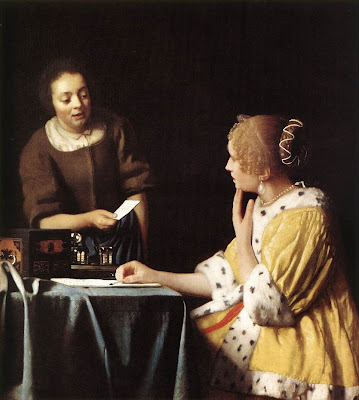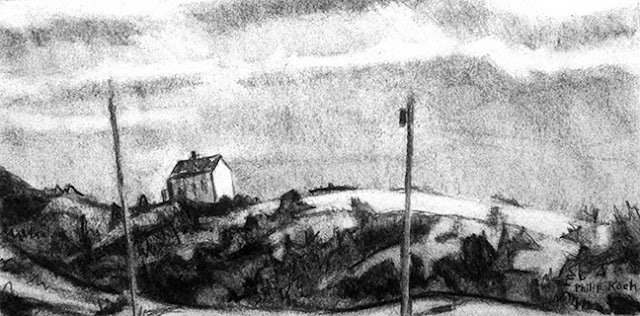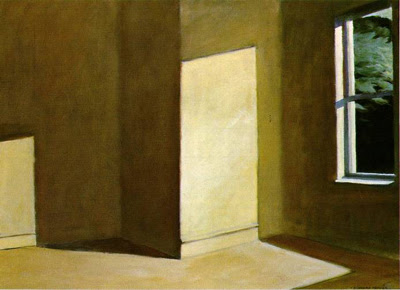A Key to Creativity from Our Very, Very Distant Past

Vermeer, Lady with her Maidservant Holding a
Letter, 1667, Frick Collection, NYC, image courtesy
Art Renewal Center.
Have been doing some hard thinking about how to teach art. My two drawing classes at Maryland Institute College of Art start up shortly. I teach observational drawing, with pride.
Art is primarily about psychology and the play of emotions in our lives. The question for painters is how best to foster that in the viewer.
Some years ago I started studying Carl Jung. (If anyone out there is in the mood for challenging reading, this is the place to go. The guy loved nothing better than to include long passages in Greek, German, and English on each page. I kid you not). But he makes a convincing case for the active hand of the unconscious in guiding our actions. Animals live guided by inborn impulses they don't understand but benefit from- such as being able to build a secure nest for their eggs using only their beak, sticks, and a little mud (if you think that's easy go try it yourself and compare your results to that of the average sparrow). We descended from animals who were acting almost entirely from such instincts. Gradually we developed intellect and eventually language and teaching. But instead of our animal instincts withering away Jung said, they're still there just below our awareness. And just like the instinct that allows a sparrow to build a beautiful nest, they're almost magical in their creative power.
Jung believed further that the seat of these unconscious messages were mental images, little pictures that he describes as being "feeling toned." He coined the now often used term archetypes to name them. They form the biggest part of who we are. Trouble is, you can't just order your unconscious to reveal itself, it is notoriously shy and prefers life in the shadows. But from time to time pieces of it poke through the surface into our awareness and bring with them a ripple of special energy.
The act of seeing is usually misunderstood as the passive receiving of thousands of pieces optical data onto the retina, which the brain immediately senses as a finished picture in the manner of a video camera. But that's wrong.
Rather it is a meeting of these bits of optical information with the archetypes we carry within us. Our memories, feelings and our unconscious archetypes merge with the incoming visual data and we "see" a chair or a table. The thing is, if this is true, no two people do it quite the same way. We literally see differently.
Let me give you a concrete example. This morning I was thinking about all this and out of no where I started thinking about a beautiful painting I used to look at when I went to the Art Students League in New York. It lives at the Frick Collection in a lovely skylit gallery. I used to go there and drink the paintings in (Frick himself, something of a robber-baron from hell, had the bucks to buy an amazing collection). One painting always stood out to me, the Vermeer reproduced above. Now ostensibly a quiet painting, it always seemed to grab ahold of me in a way the others didn't. This morning I was wondering again about why and I suddenly focused on the particular yellow top the woman at the right wears. I felt myself being pulled back to my childhood again and found myself in my old basement bedroom. When I was four, my parents painted the walls that very same color yellow as Vermeer used to clothe his model. This is color that surrounded me for the years of my growing to adulthood. It literally colored my hopes, fears, and dreams. When I look at that painting, I have those memories of mine triggered and an internal gong is struck. I can't help but be drawn to that painting. It is reaching out to me to teach me about my forgotten childhood self.
Coming back to teaching art, I'm convinced direct observation of the world has to be at the core of the experience. As one looks out with wide open eyes, one will be drawn to subjects that strike internal bells in one's unconscious. To look long and hard at the outside word ironically leads you full circle to discover internal keys to yourself. The old artists believed in the muse. More secular minds, like mine, believe the unconscious stores within it much of our creativity.
The path of the artist is to build a cooperative relationship with the unconscious. And the unconscious very much wants to use our eyes to look out at the world.


